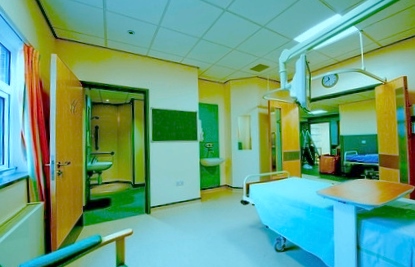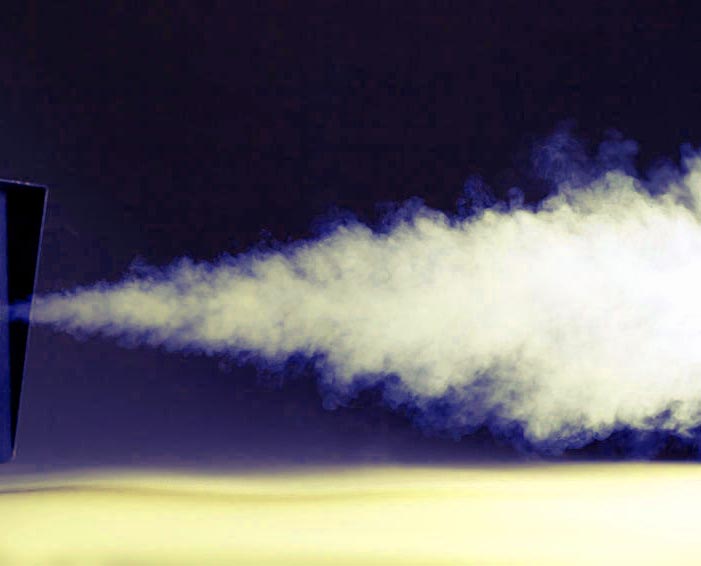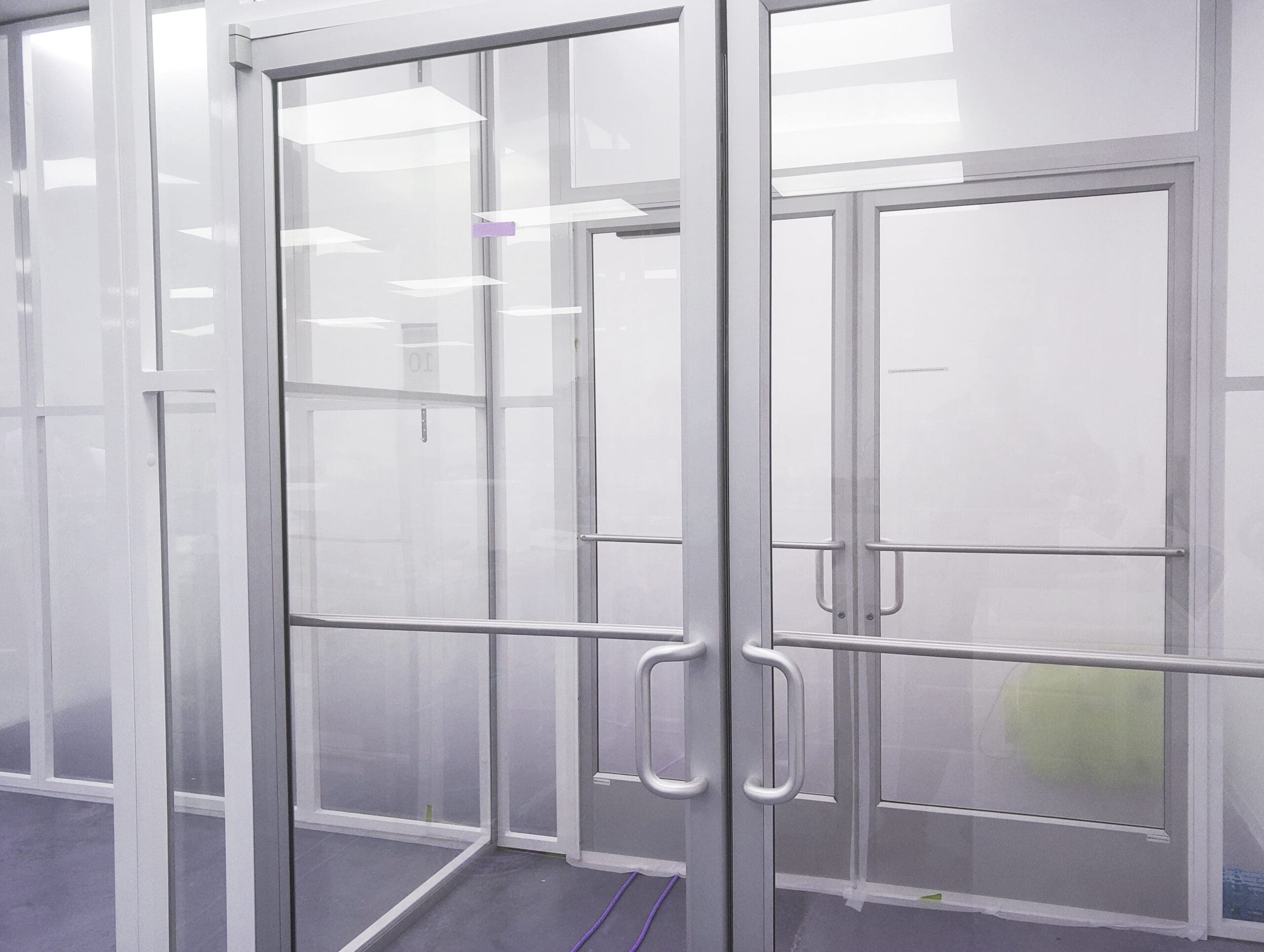Disinfection of whole rooms is becoming increasingly vital in a multitude of industries.
Customers and regulatory agencies are vigilantly tracking the habits of food production, livestock care, and healthcare facilities ability to limit hospital acquired infections.
Whether the application is used to limit the spread of infection in a hospital setting or to support the production of food and pharmaceuticals by creating a clean room setting, absolute and quick applications of antimicrobial agents are necessary for businesses to properly protect their communities and employees alike. The ability to produce faster, keep livestock healthier, and limit the spread of germs appeals to companies for more efficient means of running their business. With demand increasing for advances in technology to provide proper disinfection of entire rooms, development of devices to streamline the cleaning process is moving forward rapidly as new technologies are discovered. Whole room disinfection devices come in all shapes, chemical compositions, and mechanics. With so much variation between devices, and little regulation, it is the responsibility of Microchem Laboratory to provide our clients with accurate data as quickly as possible to present to potential consumers or for submitting to regulatory agencies.
Almost every business with an interest in limiting microorganisms has developed their own measures to keep their buildings germ-free and their employees healthy. Some agencies have a more difficult task for maintaining healthy environments or have the additional challenge of eliminating all environmental contaminants in order to achieve a clean room. In hospitals around the world, soiled surfaces are cleaned routinely and effectively by staff using disinfectants and traditional cleaning methods. Health issues arise when a surface that seems visibly clean contains enough bacteria to be transferred to another surface or cause infection in healthcare workers. “Low touch” areas may not be cleaned properly, resulting in small spaces remaining contaminated with germs which later, through indirect contact, infect critical surfaces in a room. To prevent this recontamination, as well as assist hospital personnel with maintaining a safe work environment, whole room disinfection devices eliminate the guess work of manual decontamination. Each type of whole room disinfection system sets to improve the quality of life for employees, patients, and the general population, which can in turn help any business thrive.

Whole room disinfection devices can help eliminate some of the errors that occur as well as cut down on manual labor required by staff, which can be arduous and tedious. Whole room disinfection systems, especially in assembly productions, can be used to assist with disinfection in areas that are regularly a problem without disrupting production flow as manual methods would. Whole room disinfection devices also limit the use of chemicals which greatly benefit the environment as well as the employees who would otherwise be using harmful cleaning products on a regular basis. Some of these devices in addition to disinfecting surfaces have been proven to clean the air as well. All of these benefits help not only to reduce waste and limit the impact on the environment, they also increase the quality of life for everyone in these industries.
A few examples of these devices include UV room disinfection devices, either stand alone or used within an air filter system, chemical fogging devices, ozone producing devices, and binary ionization devices. Each of these devices has their own advantages and disadvantages, as well as a multitude of applications in many industries. Hospitals and healthcare facilities are the most prominent set of industries that would benefit from these devices. Applications in veterinary clinics, food production, agriculture, commercial buildings, schools and universities, pharmaceutical, and even residential settings are all in need of antimicrobial disinfection products. In any circumstance, whole room disinfection has many advantages to traditional cleaning methods. The possibilities for future devices to improve the quality of life for everyone are endless.
Antimicrobial Devices and the EPA
When considering manufacturing or distributing antimicrobial devices or products, the best place to seek guidance about registration is directly with the EPA or through a consultant. Antimicrobial agents, devices or other products, fall under the jurisdiction of the Federal Insecticide, Fungicide, and Rodenticide Act (FIFRA). The FIFRA was originally established in 1910 and was called the Federal Insecticide Act (FIA) of 1910. This guidance set to establish guidelines of use for chemicals developed in war time that possessed pesticidal qualities. In 1972, Congress enacted significant amendments to the FIA of 1910 that established a registration process which put the responsibility of chemical analysis on the manufacturer, empowered governmental agencies with the authority to enforce compliance, and required the EPA to ensure all of the regulatory framework and guidelines are accessible to the general public. In 1983, after another round of major revisions, the act was titled Federal Insecticide, Fungicide, and Rodenticide Act which established guidelines for the collection of toxicology and efficacy data. Good Laboratory Practice (GLP) guidelines were a part of this revision and overhauled the relationship between the scientific community and regulatory agencies. The changes to the act were established in reaction to evidence of fraud brought against a laboratory outside of Chicago, Industrial Biotest Labs. Good Laboratory Practice compliance, after the act was amended in 1983, is a requirement for any study containing efficacy data submitted to the EPA for pesticide registration.
Terminology used in the FIFRA, such as pest and pesticide, is applicable to microbiology and refers to microorganisms and antimicrobial products respectively. Devices do not require registration but are subject to regulation. This means that unlike a liquid disinfectant, which would require data from a use-dilution or germicidal spray test to be submitted to the EPA in GLP format, devices only need data backing up their claims made on the label. Any claim made on the label or in advertising for the device must have efficacy data to substantiate the claim, in non-GLP format. Under the FIFRA a “device”:
“…means any instrument or contrivance (other than a firearm) which is intended for trapping, destroying, repelling, or mitigating any pest or any other form of plant or animal life (other than man and other than bacteria, virus, or other microorganism on or in living man or other living animals); but not including equipment used for the application of pesticides when sold separately therefrom.”
All of the whole room disinfection units used for UV disinfection, fogging or misting, or air sanitization, fall into the “device” category according to this definition. Some devices use antimicrobial cleaners in conjunction with a physical or mechanical operation. Devices that incorporate products already registered with the EPA as disinfectants are considered for registration on an individual basis, usually the antimicrobial product and device must be submitted together as a single unit for a pesticide claim. For inquiring about registering a specific product or device, it is best to consult with a regulatory agency directly or to hire a consultant. Antimicrobial claims for devices do not follow a specific method for disinfection or sterilization claims but Microchem Laboratory works with clients to develop customized protocols to best challenge devices and provide reliable data to be submitted to agencies such as the EPA.
Foggers and Misters
Before April 01, 2013, disinfectants already registered with the EPA were not required to provide any additional data for fogging and misting claims. Devices used for fogging and misting fell into the application device section of the FIFRA which did not require further efficacy data for products which were registered as disinfectants. Instead labels on the disinfectant could claim to kill germs using a fogging device based on the efficacy data from a previously performed AOAC use dilution. The letter released by the EPA in April of 2013 has changed this policy drastically. The EPA’s lack of confidence in the fogging methods has forced companies who previously had fogging and misting claims attached to their labels to provide efficacy data to back up the use of a fogger or mister in application of their product. EPA has provided limited guidance as to the method in which the efficacy data is collected. The combination of limited guidance but the need for efficacy data allows for flexibility and creativity while testing these variable devices. Custom studies designed at Microchem Laboratory have been conducted to test device and liquid disinfectant combinations under GLP conditions, including protocol development, efficacy data recording, and GLP reporting.
 There are some general statements that were provided about misters/foggers in the April letter released by the EPA which has changed how foggers and misters are treated in respect to pesticidal claims. The most noticeable difference is that foggers now fall into the device category under the FIFRA, which means they must have an accurate label, follow import and export regulations, and follow the general guidelines for devices. Efficacy data must back up any claims made on the label or in advertising for each device and pesticide combination. For efficacy testing this means that even if one device and one chemical used in combination is effective against MRSA, a common antibiotic resistant hospital acquired infection, that same device with a different chemical cannot claim to disinfect MRSA without data to support the new chemical. EPA also requires that each device come with operator’s instructions that reflect how the device was used for efficacy testing, as well as child proof packaging. This combination of guidelines from the FIFRA have provided manufacturer’s and laboratories, such as Microchem, with stepping stones to develop protocols for testing fogging and misting devices. With efficacy testing in mind, any device with false claims is subject to penalty under the enforcement of the FIFRA for misbranding. Companies must also comply with any and all import and export restrictions or guidelines set forth by the FIFRA section 17, this includes records of devices produced and sold and companies are subjected to inspections from the EPA of such records.
There are some general statements that were provided about misters/foggers in the April letter released by the EPA which has changed how foggers and misters are treated in respect to pesticidal claims. The most noticeable difference is that foggers now fall into the device category under the FIFRA, which means they must have an accurate label, follow import and export regulations, and follow the general guidelines for devices. Efficacy data must back up any claims made on the label or in advertising for each device and pesticide combination. For efficacy testing this means that even if one device and one chemical used in combination is effective against MRSA, a common antibiotic resistant hospital acquired infection, that same device with a different chemical cannot claim to disinfect MRSA without data to support the new chemical. EPA also requires that each device come with operator’s instructions that reflect how the device was used for efficacy testing, as well as child proof packaging. This combination of guidelines from the FIFRA have provided manufacturer’s and laboratories, such as Microchem, with stepping stones to develop protocols for testing fogging and misting devices. With efficacy testing in mind, any device with false claims is subject to penalty under the enforcement of the FIFRA for misbranding. Companies must also comply with any and all import and export restrictions or guidelines set forth by the FIFRA section 17, this includes records of devices produced and sold and companies are subjected to inspections from the EPA of such records.
Misting and fogging technology has existed long before antimicrobial applications were considered. Chemical warfare, mosquito and other insect control, and movie effects are all examples of fogging technology that has been used for decades. Fogging devices are variable in size, shape, and technology. The most recognizable fogging devices use chilled chemical methods, such dry ice or liquid nitrogen. Chilled chemicals are most commonly used in movie or theatrical performances. Other applicators used for practical purposes are thermal and cold foggers. Thermal and cold foggers are used for insect repellent in indoor and outdoor areas, one application uses heat while the other uses pressure. Another technology used for fogging is the use of ultrasonic pulses through pezio disks. This fogging application does not require heating or applying pressure to the efficacious chemical which can increase the integrity and stability of the pesticide for application of a disinfectant. With any of these applications there are advantages and disadvantages but each fogging device that has an efficacy claim must provide the corresponding data to substantiate the label.
How can Microchem Laboratory assist your company?
Microchem Laboratory has an excellent staff, knowledgeable and friendly, who are ready to provide price quotes, advice, or information about efficacy testing. The first step of the process is to contact the laboratory and let us assist in the planning stages for antimicrobial testing. A scientist or team of scientists, depending upon the size of the study, will be assigned to the project and begin to work directly with the study sponsor to define parameters or develop a protocol if necessary. Each device is unique and should be tested in a manner that best simulates actual use. At Microchem, the scientists strive to provide innovative strategies to accomplish any testing objective.
After the scientist gains an understanding of the device and the goals of the study sponsor, they will provide a testing plan outlined in a detailed price quote. For GLP compliance, a protocol is drafted and must be approved by the study sponsor and testing facitlity before testing can begin, a study sponsor may also choose to have a regulatory consultant or agency review and approve a protocol. Most devices are tested under non-GLP conditions and do not require the development of a protocol. Non-GLP testing is used for proof of concept or for data generation for claim substantiation on labels, typically device testing falls into this category. Once parameters have been established or a protocol signed by all parties, testing is performed. Testing can take two days or as long as several months, throughout this time, the client has access to the scientist for questions at any stage of the process. Once testing is complete, a report in GLP or non-GLP format is completed and the sponsor is able to review the data. Study updates may also be issued for studies that extend over the course of a couple weeks. The study sponsor and scientist may review the data together to ensure comprehension, and may discuss other testing options to answer further questions.
Scientists are the primary point of contact for the client and this direct communication approach, which differs from other laboratories, allows questions from both parties to be answered swiftly and concisely. This method leads to faster turn around times and higher quality data. Specifically, our custom team has handled multiple large projects over the past year which involved devices, aerosol testing, and whole room disinfection. Every client receives excellent customer service from a competent scientist who will see testing through to a rapid completion.
References
www3.epa.gov/
www2.epa.gov/laws-regulations/summary-federal-insecticide-fungicide-and-rodenticide-act
www2.epa.gov/aboutepa/epa-history-federal-insecticide-fungicide-and-rodenticide-act
Middleton, Karen E. “Cleaning and Disinfection: Whole Room Fogging.” Cleanroom Technology. Published on May 12, 2010. Accessed October 19, 2015. www.cleanroomtechnology.com/news/article_page/Cleaning_and_Disinfection_Whole_room_fogging/52850
Written by E. Richard, B.S.

